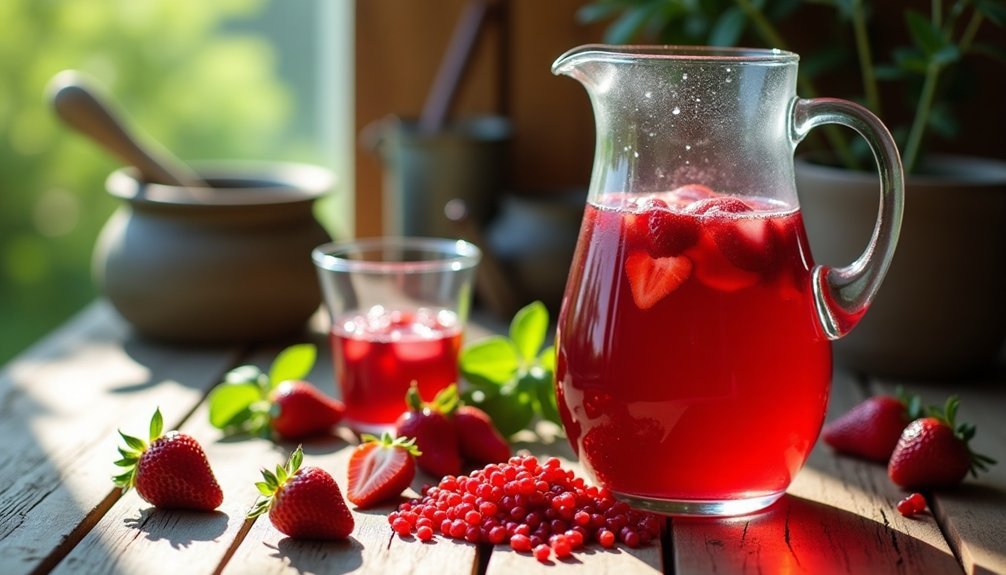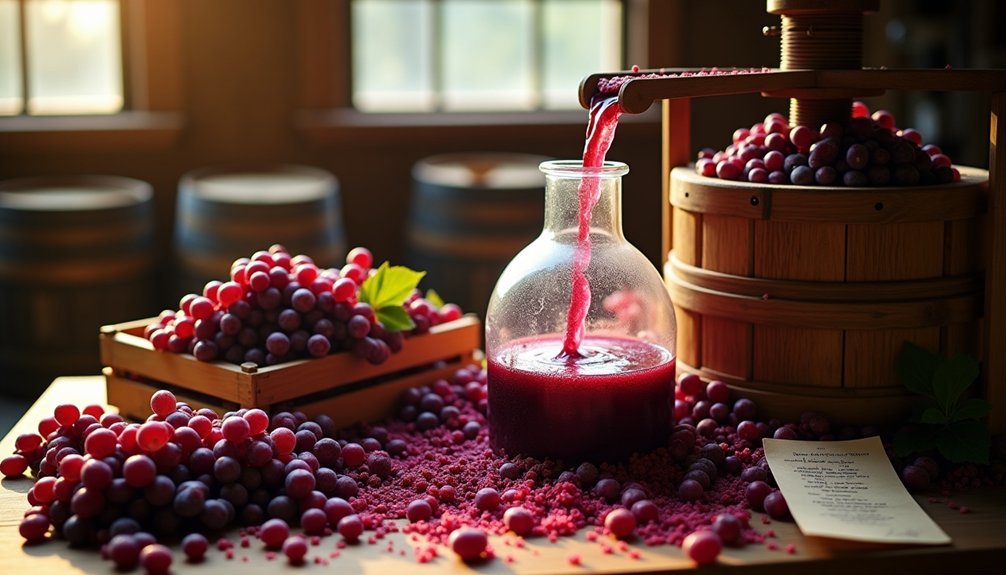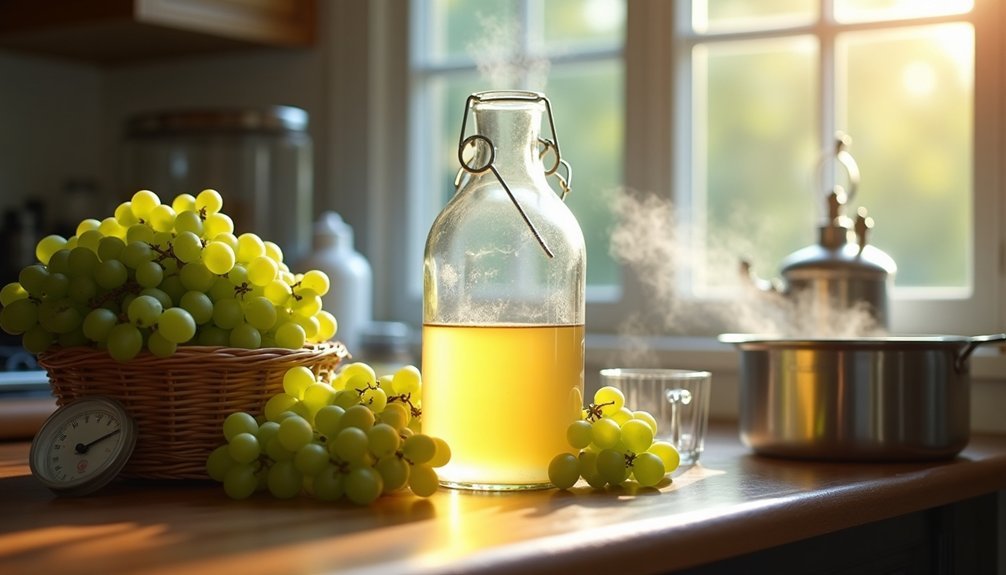I’ve been making strawberry wine for over a decade, and I’m convinced it’s summer’s perfect souvenir. There’s something magical about transforming those ruby jewels into a sophisticated beverage that captures sunshine in a bottle. My friends always beg for this recipe when they taste it at my summer gatherings. The process isn’t complicated, but there are a few essential steps that separate an ordinary fruit wine from one that’ll have your guests asking for seconds. Let me show you how.
Why You’ll Love This Drink
Nostalgia in a glass. That’s what this homemade strawberry wine delivers with each sip. I’ve crafted this recipe to capture summer’s essence in a bottle you can enjoy year-round. The natural sweetness of fresh strawberries transforms into a sophisticated drink that’s both invigorating and complex.
I love how this wine bridges the gap between casual and elegant. It’s perfect for backyard gatherings but equally at home at dinner parties. The beautiful ruby color alone makes it Instagram-worthy, but it’s the balanced flavor that will keep you coming back.
The best part? You’ll experience the satisfaction of creating something truly special from scratch, watching it develop and mature into a delightful homemade treasure.
Ingredients
Creating this summer delight starts with gathering the right components. You’ll need 6 pounds of fresh strawberries—the riper, the better—as they’ll impart that vibrant color and sweet flavor we’re after. I use 3.5 pounds of white sugar to feed the fermentation and balance the final sweetness.
For the technical elements, you’ll need yeast nutrient (1 teaspoon), acid blend (½ teaspoon), pectic enzyme (½ teaspoon), and wine tannin (⅛ teaspoon). These might sound intimidating, but they’re easily found at brewing supply stores.
The star player is a packet of Red Star “Cote de Blancs” yeast, which complements fruit wines beautifully. Finally, a gallon of spring water ties it all together. Don’t substitute tap water—the chlorine can interfere with fermentation.
Directions
Now that you’ve gathered all your ingredients, it’s time to plunge into the winemaking process. I’ll walk you through each step to create your perfect strawberry wine.
First, thoroughly crush those fresh strawberries and transfer them to your sanitized fermenter. Dissolve the sugar in spring water, then pour this mixture over your crushed berries. Add the yeast nutrient, acid blend, pectic enzyme, and tannin, stirring well to combine everything.
Next, rehydrate your Cote de Blancs yeast according to package instructions and add it to your mixture. Cover with an airlock and let it ferment for two weeks. After this primary fermentation, rack the liquid into a secondary fermenter, leaving sediment behind. Allow it to continue fermenting for at least six weeks until clear before bottling.
Substitutions and Variations
While the classic recipe creates a beautiful strawberry wine, you can easily adapt it to suit your taste preferences or work with what you have on hand.
If you prefer a drier wine, reduce the sugar to 2.5-3 lbs. For a sweeter finish, you can back-sweeten with simple syrup after fermentation is complete. Don’t have Cote de Blancs yeast? Champagne yeast works wonderfully too, though it may produce a drier result.
You can also experiment with mixed berry wines by substituting some strawberries with raspberries or blackberries. I’ve found that adding a vanilla bean or cinnamon stick during secondary fermentation creates interesting complexity.
For a lower-alcohol version, reduce initial sugar and add more fruit. Just remember that any substitution may affect fermentation time and final clarity.
Additional Things to Serve With This Drink
Three perfect pairings will elevate your homemade strawberry wine experience. I’ve found that a cheese board featuring creamy brie, mild goat cheese, and aged white cheddar creates a beautiful contrast with the sweet berry notes in the wine. The creamy textures complement the fruity acidity perfectly.
For dessert pairings, I recommend serving small vanilla shortbread cookies or dark chocolate-dipped strawberries. The vanilla enhances the wine’s natural strawberry flavor, while dark chocolate offers a sophisticated counterpoint.
If you’re hosting a summer gathering, try creating a strawberry wine spritzer station with fresh mint, sliced citrus, and sparkling water. Guests can customize their drinks while enjoying the fruits of your wine-making labor. These simple accompaniments transform your homemade creation into a complete tasting experience.
Final Thoughts
Making strawberry wine at home represents a delightful journey of patience and creativity that rewards you with a unique beverage impossible to find on store shelves. I’ve found that the process connects me to ancient traditions while allowing modern experimentation with this seasonal fruit.
Don’t be discouraged if your first batch isn’t perfect. Each time you craft this wine, you’ll develop intuition for the process and discover subtle adjustments that suit your taste. The true magic happens during aging—what might taste harsh initially transforms into something remarkable with time.
Remember that homemade wine is about more than the final product; it’s about savoring the entire experience from berry to bottle. I hope you’ll share your creation with friends and create memories around something crafted by your own hands.




This strawberry wine recipe looks delicious and straightforward. I appreciate the detailed steps and tips, which make homemade wine less intimidating to try.